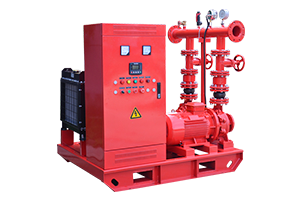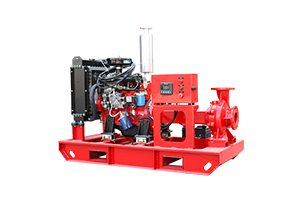-
 Dec 15, 2023When should a fire pump be replaced?The replacement of a fire pump depends on various factors, and it's crucial to follow manufacturer recommendations, industry standards, and local regulations. Here are some common reasons for considering the replacement of a fire pump:
Dec 15, 2023When should a fire pump be replaced?The replacement of a fire pump depends on various factors, and it's crucial to follow manufacturer recommendations, industry standards, and local regulations. Here are some common reasons for considering the replacement of a fire pump:
View details -
 Dec 14, 2023How long does it take to run a diesel fire pump?The duration for which a diesel fire pump runs depends on several factors, and it is not a fixed or standardized timeframe. The run time of a diesel fire pump is influenced by the specific circumstances of a fire event, the size of the fire, the capacity of the pump, and the firefighting strategy employed. Here are some factors that can affect the run time:
Dec 14, 2023How long does it take to run a diesel fire pump?The duration for which a diesel fire pump runs depends on several factors, and it is not a fixed or standardized timeframe. The run time of a diesel fire pump is influenced by the specific circumstances of a fire event, the size of the fire, the capacity of the pump, and the firefighting strategy employed. Here are some factors that can affect the run time:
View details -
 Dec 14, 2023What is the function of a diesel fire pump?A diesel fire pump is a critical component of a fire protection system, designed to provide water at high pressure to suppress and control fires. Here are the main functions of a diesel fire pump:
Dec 14, 2023What is the function of a diesel fire pump?A diesel fire pump is a critical component of a fire protection system, designed to provide water at high pressure to suppress and control fires. Here are the main functions of a diesel fire pump:
View details -
 Dec 13, 2023What is the difference between a fire pump and a booster pump?While both fire pumps and booster pumps are designed to increase water pressure, they serve different purposes and are used in distinct applications. Here are the key differences between a fire pump and a booster pump:
Dec 13, 2023What is the difference between a fire pump and a booster pump?While both fire pumps and booster pumps are designed to increase water pressure, they serve different purposes and are used in distinct applications. Here are the key differences between a fire pump and a booster pump:
View details -
 Dec 13, 2023Why would a building need a fire pump?A building may need a fire pump for various reasons, primarily related to ensuring an adequate and reliable water supply for firefighting purposes. Here are common scenarios and reasons why a building might require a fire pump:
Dec 13, 2023Why would a building need a fire pump?A building may need a fire pump for various reasons, primarily related to ensuring an adequate and reliable water supply for firefighting purposes. Here are common scenarios and reasons why a building might require a fire pump:
View details -
 Dec 12, 2023What is the purpose of a fire pump?A fire pump serves a critical role in a fire protection system by ensuring a reliable and sufficient water supply for firefighting. Its primary purpose is to provide water at a high pressure and flow rate to the sprinkler system, standpipes, hydrants, or other firefighting equipment within a building or facility. The key functions and purposes of a fire pump include:
Dec 12, 2023What is the purpose of a fire pump?A fire pump serves a critical role in a fire protection system by ensuring a reliable and sufficient water supply for firefighting. Its primary purpose is to provide water at a high pressure and flow rate to the sprinkler system, standpipes, hydrants, or other firefighting equipment within a building or facility. The key functions and purposes of a fire pump include:
View details






